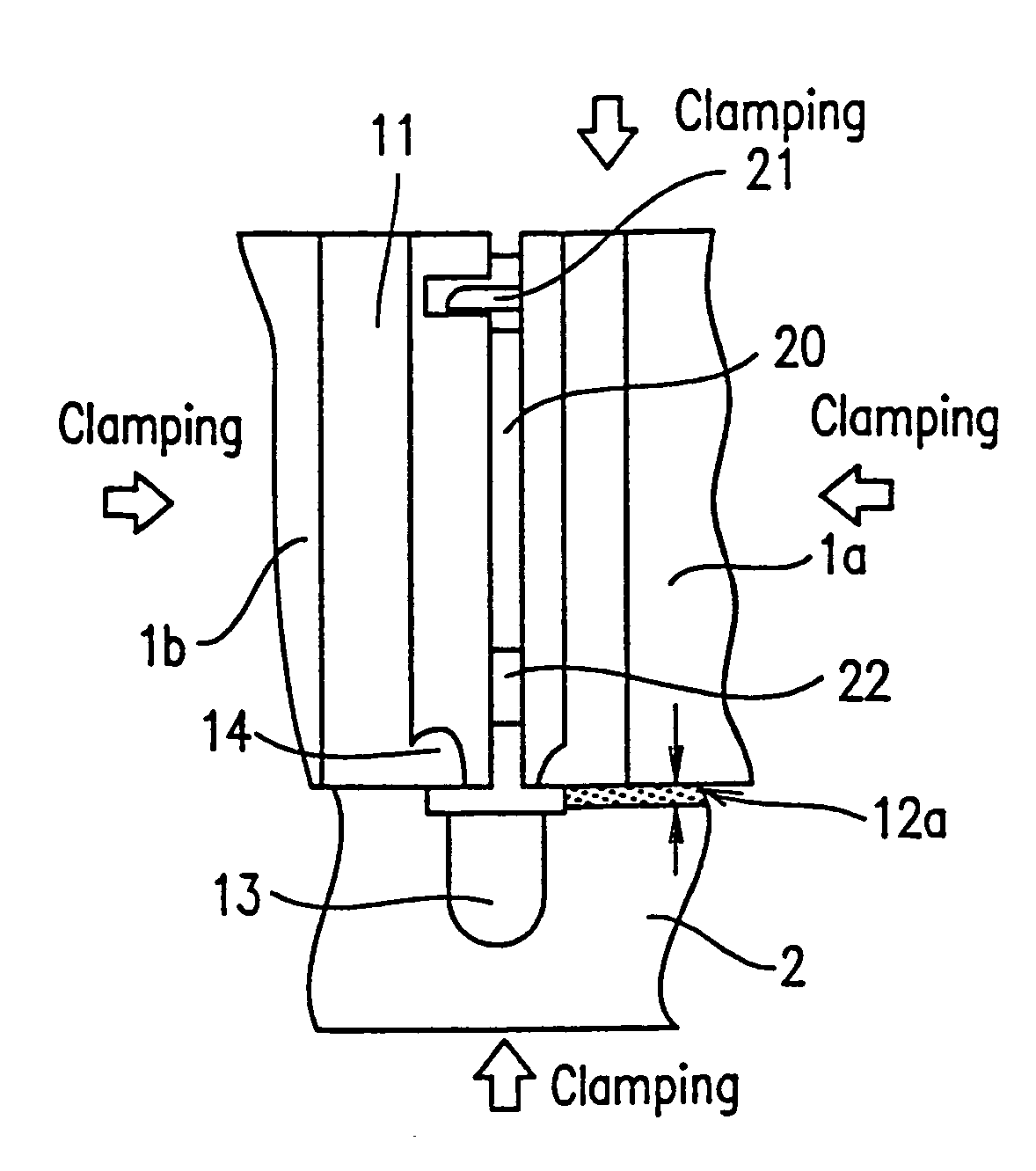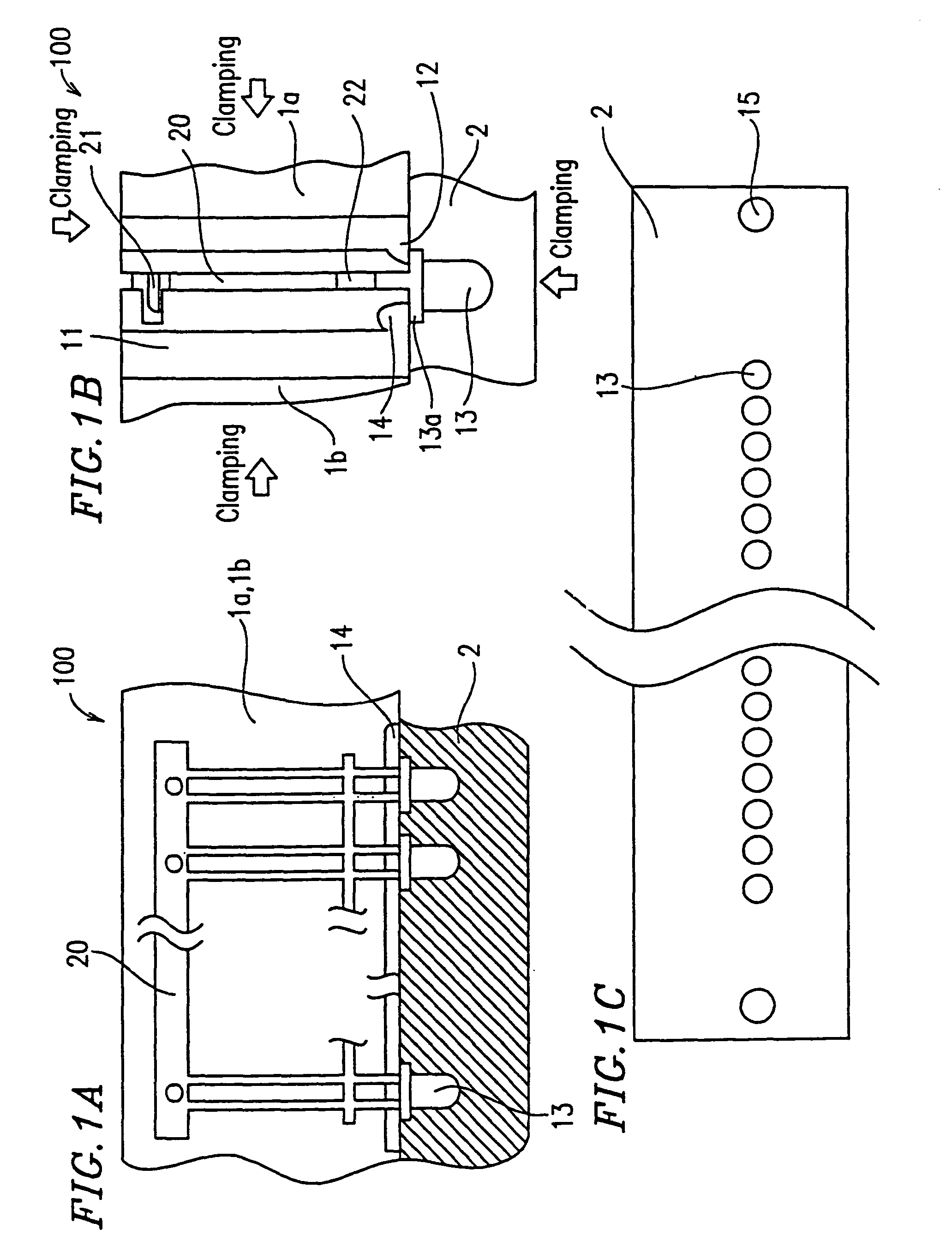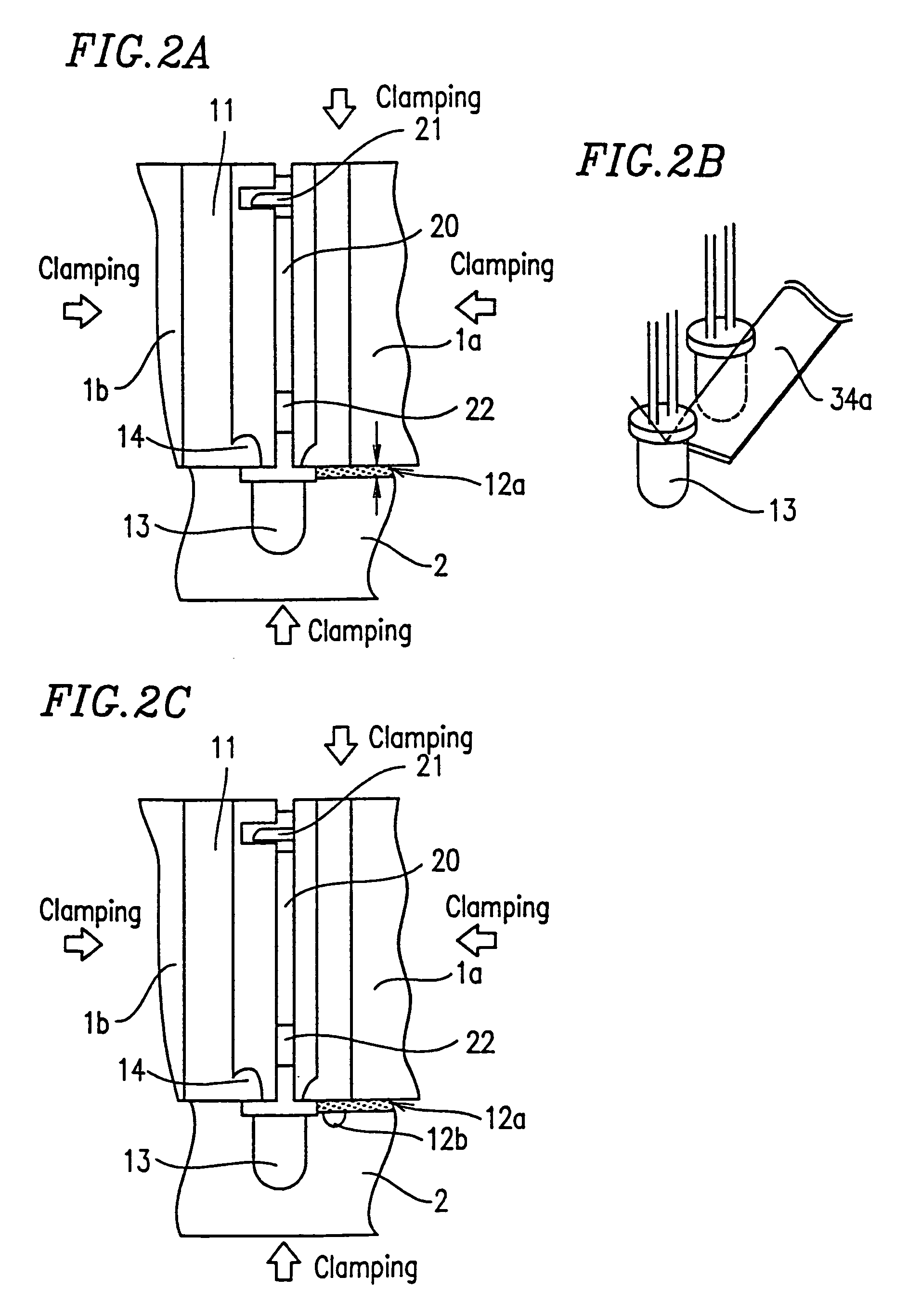Resin molding die and production method for semiconductor devices using the same
- Summary
- Abstract
- Description
- Claims
- Application Information
AI Technical Summary
Benefits of technology
Problems solved by technology
Method used
Image
Examples
example 1
[0085]In Example 1 of the present invention, a case will be described in which the temperature of the molding die is increased to or above the curing temperature of the resin used.
[0086]First, as shown in FIG. 6A, a lead frame 20 for an LED lamp, to which a semiconductor device has been mounted and wire-bonded, is positioned relative to a lead frame positioning pin 21 provided in an upper right die 1a. Then, an upper left die 1b is attached, and the upper right die 1a and the upper left die 1b are clamped together along the lateral direction. Then, the tip end of the lead frame 20 is inserted into a cavity 13 provided in a lower die 2, and the upper and lower dies 1a, 1b and 2 are clamped together along the vertical direction. An air vent 12 having a similar shape to that of the spool 11 is provided on the opposite side from the spool 11 with respect to the cavity 13. In Example 1 as well as Example 2 (described below), the spool 11 may have a diameter, e.g., Φ=about 5 mm, and the a...
example 2
[0094]In Example 2 of the present invention, a case will be described in which, in order to ensure stable resin injection from a single nozzle into multiple cavities, the temperature of the molding die is first lowered below the curing temperature of the resin used, and thereafter increased to or above the curing temperature of the resin.
[0095]First, as shown in FIG. 6A, a lead frame 20 for an LED lamp, to which a semiconductor device has been mounted and wire-bonded, is positioned relative to a lead frame positioning pin 21 provided in an upper right die 1a. Then, an upper left die 1b is attached, and the upper right die 1a and the upper left die 1b are clamped together along the lateral direction. Then, the tip end of the lead frame 20 is inserted into a cavity 13 provided in a lower die 2, and the upper and lower dies 1 and 2 are clamped together along the vertical direction.
[0096]Next, as shown in FIG. 6B, a cylindrical resin injection nozzle 30 is set to the spool 11. A space m...
PUM
 Login to View More
Login to View More Abstract
Description
Claims
Application Information
 Login to View More
Login to View More - R&D
- Intellectual Property
- Life Sciences
- Materials
- Tech Scout
- Unparalleled Data Quality
- Higher Quality Content
- 60% Fewer Hallucinations
Browse by: Latest US Patents, China's latest patents, Technical Efficacy Thesaurus, Application Domain, Technology Topic, Popular Technical Reports.
© 2025 PatSnap. All rights reserved.Legal|Privacy policy|Modern Slavery Act Transparency Statement|Sitemap|About US| Contact US: help@patsnap.com



